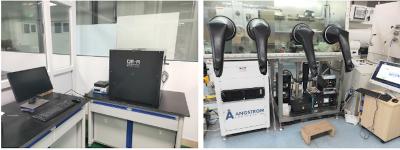Researchers detect quantum confinement in bulk perovskite crystals
Researchers at McGill University have gained new insight into the inner workings of perovskites, especially their ability to function even despite the existence of defects in the materials' crystal structure.
"Historically, people have been using bulk semiconductors that are perfect crystals. And now, all of a sudden, this imperfect, soft crystal starts to work for semiconductor applications, from photovoltaics to LEDs," explains senior author Patanjali Kambhampati, an associate professor in the Department of Chemistry at McGill. "That's the starting point for our research: how can something that's defective work in a perfect way?"



